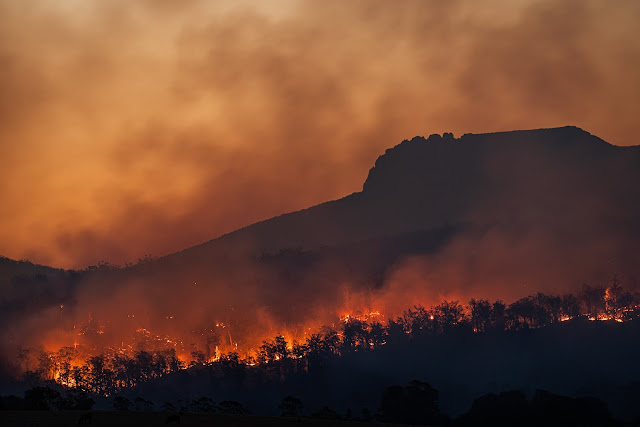Global Warming: The Earth Is Getting Hotter By Each Passing Day
The issue of global warming and its impacts on weather
patterns around the world has become increasingly important in recent years. Global
warming is causing an increase in extreme weather events around the world. As
the planet continues to warm due to increased levels of greenhouse gasses in
the atmosphere, weather patterns are becoming more extreme and volatile.
The United States has witnessed many examples of this in
recent years. There have been more frequent and severe storms, floods,
heatwaves, and wildfires. These trends are projected to continue as the planet
continues to warm. The United States experienced 16 separate billion-dollar
weather and climate disaster events in the first half of 2021 alone, according
to the National Oceanic and Atmospheric Administration. This included major
winter storms, flooding, tornado outbreaks, and a devastating hurricane. The
previous record for weather disasters in a year was 16 in 2011 and 2020.
Heatwaves are becoming more common and severe. The Pacific
Northwest experienced an unprecedented heatwave in June 2021 that shattered
temperature records and resulted in hundreds of deaths. The contiguous U.S also
set a record for the most daily high temperature records broken in June 2021. Wildfires have been burning larger areas with
each passing year. In 2020, wildfires burned over 10 million acres in the
western U.S the most on record. The
fires caused at least 43 deaths and destroyed thousands of structures.
Sea levels are rising along coastlines due to melting ice
sheets and glaciers and the expansion of warming ocean water. This increases
the risk of coastal flooding, erosion, and property damage from storms and high
tides. The rate of global sea level rise has doubled since 1993.
Changes in precipitation patterns are also being driven by
global warming. Many parts of America, particularly the West and South, are
seeing longer and more severe droughts. Meanwhile, other areas like the Midwest
and Northeast are experiencing more instances of extreme rainfall and flooding.
The changing precipitation patterns are disrupting water access for
agriculture, impacting crop yields. Many regions are seeing more instances of
both record high and record low temperatures as climate change disrupts typical
seasonal variations. For example, the U.S Southwest has experienced more
frequent and severe heat waves in recent years, with temperatures regularly
exceeding 110 degrees Fahrenheit.
The examples above demonstrate that global warming is
already having a profound impact on weather patterns and the subsequent costs
to society. As global temperatures continue to increase, these impacts will
only become more severe and widespread unless significant action is taken to
reduce greenhouse gas emissions and limit additional global warming to less
than 1. degrees Celsius. The sooner the
world takes concerted action to curb climate change, the less severe the
impacts will be on America.
The climate crisis requires global action and cooperation.
The United States, as one of the largest emitters historically, has a
responsibility to lead the way by implementing ambitious policies that
transition our economy away from fossil fuels towards cleaner sources of energy.
Governments and businesses are urged to take urgent steps to reduce emissions
and transition to renewable energy sources. Communities must also improve
disaster preparedness and adaptation planning to minimize the damage from these
weather disasters.
With determined action, the worst effects of global warming
may be avoided and future generations spared from the most devastating
consequences of a rapidly changing climate.

.png)



